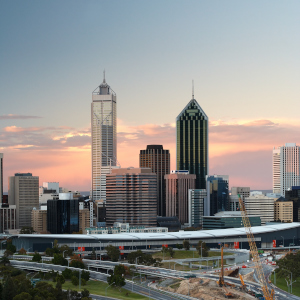State of Markets - VIC Feburary 2015
Fast movers
Melbourne finished 2014 second among the state capitals in terms of value growth, but affordability issues may surface in 2015

Over December 2014, Melbourne recorded steady property value growth of 1.6 per cent. This placed the Victorian capital fourth among the nation’s state capitals, behind Adelaide, Perth and Hobart.
However, CoreLogic RP Data reports that in the 12 months leading up to December, Melbourne recorded value growth of 7.6 per cent, beaten only by Sydney at 12.4 per cent.
With a median property price of $587,000 in 2014, the data house says that Melbourne came in second among the state capitals.
Across the nation, suburbs that experienced the largest change in median price over the past 12 months were uncovered in CoreLogic RP Data’s Best of the Best report, released in December.
The suburb of Ripponlea, in the inner south east, recorded the highest growth for property values in Melbourne, at 32.1 per cent. The median value for properties in this area was estimated at $1,086,013.
Armadale, in the Stonnington LGA, also recorded a strong performance, with the value of properties rising by 26.6 per cent over the past year and the median house price now $1,694,221.
Herron Todd White predicts that over 2015, a key challenge facing the Victorian capital will be the ability of first home buyers to enter the market. The property valuation group says that as Melbourne property becomes less affordable, first-time and young home buyers are being forced to either rent or buy on the city’s outskirts. HTW says inner-city property prices have been pushed up at auction by private investors and developers.
January 2015 saw the release of CoreLogic RP Data’s Pain and Gain report, revealing the regions across the country that recorded the greatest proportion of gross losses in resales when compared with the original purchase price. Nationally, 9.3 per cent of all home resales recorded a gross loss.
This figure put regional Victoria slightly ahead of the national trend, with 9.5 per cent of resales resulting in a loss. However, it compares favourably with other regional areas. Regional Western Australia, by comparison, recorded a loss rate of 22.5 per cent.
Melbourne only experienced losses on 6.5 per cent of resales.
In focus
Clifton hill holds a great position within Melbourne city. Transport links such as the tram and train stations offer easy access to the CBD, located only five kilometres away.
Queens Parade contains a buzzing retail precinct comprising bars and retail outlets. This modern part of the suburb is complemented by the nearby Yarra Bend parklands, with running tracks, ovals and picnic spots.
Most of the area’s properties are single-fronted cottages and larger terrace homes. Many were built in the early Edwardian era and have been preserved in their original state.
Over the past 10 years, we have seen some new developments appear in the south-eastern part of Clifton Hill. Many of this area’s light industrial and commercial properties have now been converted to residential units.
While the suburb contains mixed-aged residents, we have seen an increase in young families in recent years, many of them attracted by the prestigious Clifton Hill and Spensley Street primary schools.
The entire Melbourne rental market has been relatively soft over the past 12 to 18 months, due to a slight oversupply of new buildings and developments.
However, Clifton Hill has been somewhat sheltered from this increase in stock, because it is a small suburb with few new buildings.
As long as there is no sudden increase in new developments, I expect the area’s trend of good rental returns and low vacancy rates to continue into 2015.
I would advise investors to consider one of the Victorian or Edwardian houses instead of the suburb’s new developments, which are no different to those that can be found in neighbouring suburbs such as Fitzroy.
Period property is in scarce supply and always receives a high level of interest.
For a good-quality property of this type, expect to pay between $850,000 and $900,000.
Those that require only a cosmetic upgrade are often favoured. Once heavy-duty structural changes are made, these properties lose their character, and you lose your money.
Although Melbourne’s property as a whole has performed very well over the past couple of years, I anticipate more subdued growth in 2015.
Nevertheless, Clifton Hill’s outlook for the next five to 10 years is very strong.
There was talk of compulsory acquisition of properties in the south-western part of the suburb as a result of the East West tunnel. However, the new government looks to have overhauled this plan
Fast 5 hotspots
Lake Tyers Beach